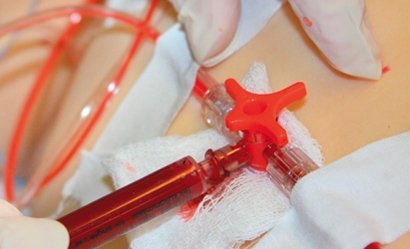Many nurses don’t realize how much they’ve learned until they start reviewing their student notes. The most pertinent information is kept fresh, ready to be drawn on at a moment’s notice. But what about the more specialty-based information? For example, everything you learned about the neonate 12 months ago has been neatly stored deep in the memory banks as you work your way through geriatrics or psychiatry.
One question students ask a lot is “What clinical signs should I memorize?” You know what we’re talking about. Usually simple tests, named after the person who developed them, that can help diagnose or indicate problems.
There are actually hundreds of these signs in medicine, so which ones do you need to know for the NCLEX? We’ve listed the ones that commonly appear on the exam – and one important one it’s time to forget!
ABDOMINAL
- Rovsing’s Sign – palpation of the abdomen in the left lower quadrant elicits pain in the right lower quadrant, and is indicative of appendicitis.
- McBurney’s Sign – tenderness at McBurney’s point, located 2/3 of the distance from the anterior iliac spine to the umbilicus on the right side of the abdomen. Indicative of appendicitis.
- Cullen’s Sign – superficial edema and periumbilical ecchymosis, indicative of intra-abdominal or retroperitoneal hemorrhage. May be seen in acute pancreatitis or ruptured ectopic pregnancy.
- Grey-Turner’s Sign – superficial ecchymosis along the flank, it often is seen with Cullen’s sign, and is indicative of acute or necrotizing pancreatitis.
- Murphy’s Sign – while palpating the right subcostal region, pain is elicited when the client breathes in deeply. A positive sign is indicative of cholecystitis.
- Blumberg’s Sign – also known as rebound tenderness, pain is elicited when pressure is removed from the abdomen during palpation. A positive sign is indicative of peritonitis.
- Kehr’s Sign – this is referred pain in the shoulder elicited when a client is supine and legs are elevated. It is usually indicative of ruptured spleen.
NEUROLOGICAL
- Kernig’s Sign – while lying supine with hips flexed to 90 degrees, pain is elicited when attempting to straighten the knee. A positive sign is indicative of meningitis.
- Brudzinski’s Sign – while lying supine, a client’s hips and knees flex when the neck is flexed. A positive sign is indicative of meningitis.
- Chvostek’s Sign – elicited by tapping the facial nerve about 1cm below the zygomatic process. A positive response is seen when the facial muscles contract, and is indicative of hypocalcemia.
- Hoffman’s Sign – elicited by tapping the nail of the third or fourth finger. A positive response involves an involuntary flexing of the distal ends of the thumb and index finger, and is indicative of cervical spinal cord trauma and conditions such as cervical spondylitis.
- Phalen’s Sign – hands are held out in front of the client, with wrists flexed. A positive response is when numbness and tingling are felt in the hands after holding this position for at least 60 seconds. A positive response is indicative of carpal tunnel syndrome.
- Tinel’s Sign – elicited by lightly tapping over the median nerve at the wrist. A positive sign causes tingling in the thumb, index and middle fingers, and is indicative of carpal tunnel syndrome.
OTHERS
- Kussmaul’s Sign – is a paradoxical rise in jugular venous pressure on inspiration, and is seen in cardiac disease, especially right-sided heart disease.
- Babinski’s Sign – elicited when the sole of the foot is stroked, causing the big toe to move up, and the other toes to fan out. This is a normal newborn reflex that disappears by age 2. If seen in older children or adults, it’s often indicative of brain or neurological disorders including brain tumors or Lou Gehrig Disease.
- Allis Sign – also known as the Galeazzi maneuver, a positive sign is elicited by lying a child supine with knees and hips flexed, and feet flat on the surface. If the height of the knees is uneven, the shorter knee is indicative of hip displasia.
- Nikolsky’s Sign – a dermatological sign that is elicited when slight rubbing of the skin causes the outer epidermis to easily separate from the underlying skin layers. A positive result is often associated with pemphigus vulgaris.
And one to let go…
Homan’s Sign – Homan’s Sign is no longer considered a reliable indicator of DVT because it can indicate a DVT when none is present, and it can suggest no DVT when one actually is present.
The most commonly used pre-test is the Well’s score which is based on the following criteria;
Paralysis, paresis, or recent orthopedic casting of a lower extremity (1 point)
●Recently bedridden for longer than three days or major surgery within the past four weeks (1 point)
●Localized tenderness in the deep vein system (1 point)
●Swelling of an entire leg (1 point)
●Calf swelling 3 cm greater that the other leg, measured 10 cm below the tibial tuberosity (1 point)
●Pitting edema greater in the symptomatic leg (1 point)
●Collateral non-varicose superficial veins (1 point)
●Active cancer or cancer treated within six months (1 point)
●Alternative diagnosis more likely than DVT (eg, Baker’s cyst, cellulitis, muscle damage, post phlebitic syndrome, inguinal lymphadenopathy, external venous) compression (-2 points)
A total of three to eight points indicates that there is a high probability of DVT, one to two points indicates that there is a moderate probability of DVT, and zero or fewer points indicates that there is a low probability of DVT.






